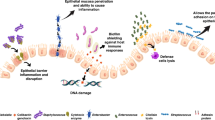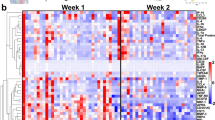Abstract
ABSTRACT: The concentrations of eight antimicrobial proteins, IIS IgA, IgG, IgM, ai-antitrypsin, lactoferrin, lysozyme, C3, and C4 were measured in sequential samples of colostrum, transitional and mature milk from 47 women in Merseyside, England by single radial immunodiffusion. Concentrations were highest in colostrum and then declined until relatively stable concentrations were reached in mature milk. A wide variation in protein concentrations was noted in the milk from different individuals at any given postpartum time interval and this was particularly so during the first 4 days postpartum. The decline in individual antimicrobial protein concentrations seen in samples of transitional milk appeared to take a variable period of time to stabilize to mature milk concentrations of each protein. These variations may reflect different rates of transport or secretion of these proteins from the alveolar epithelial cells into the alveolar lumen. Because of the wide variations in antimicrobial proteins observed in milk samples from the individuals in this study at similar postpartum time intervals, it is suggested that banked milk should be monitored not only for bacterial contamination, but also for levels of antimicrobial proteins, if it is considered that a major advantage of unprocessed human milk is the immune protection which it confers.
Similar content being viewed by others
Log in or create a free account to read this content
Gain free access to this article, as well as selected content from this journal and more on nature.com
or
Author information
Authors and Affiliations
Rights and permissions
About this article
Cite this article
Lewis-Jones, D., Lewis-Jones, M., Connolly, R. et al. Sequential Changes in the Antimicrobial Protein Concentrations in Human Milk during Lactation and Its Relevance to Banked Human Milk. Pediatr Res 19, 561–565 (1985). https://doi.org/10.1203/00006450-198506000-00012
Received:
Accepted:
Issue date:
DOI: https://doi.org/10.1203/00006450-198506000-00012
This article is cited by
-
Oxidant and antioxidant status of human breast milk during lactation period
Dairy Science & Technology (2015)
-
Finally! the Brambell receptor (FcRB)
Immunologic Research (1997)
-
A method for isolation of milk fat globules
Lipids (1986)



